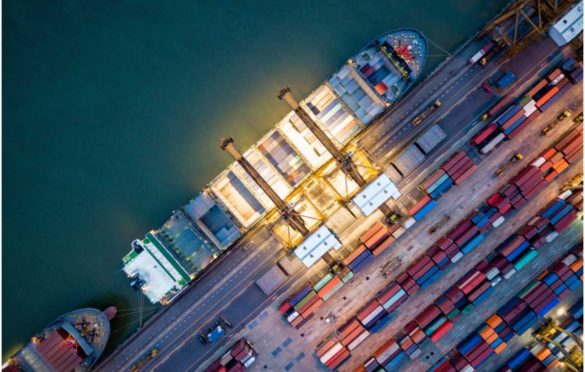
How Technology Is Revolutionizing Cold Chain Logistics
The past 20 to 30 years have been a fascinating time for technology. It’s enhanced the way we live our lives, move supplies around, and get everything we need on a daily basis.
Throughout that time, cold chain Logistics have expanded and kept pace with the demands of customers around the country.
Continuous growth and environmental challenges necessitate evolution and technology to make sure sensitive products arrive at their destinations and safely.
Finding the safest and most cost-effective route to transport perishable goods is challenging, so having powerful technology backing you up is essential.
In this article, we’ll explore how advances in cold chain technology have improved the entire supply chain life cycle.
Table of Contents
Temperature Sensing Tools
When you’re dealing with items that require regular temperature checks, temperature sensing tools are going to be at the top of the list of tools you need to succeed. Temperature sensing tools can be as simple as thermometers or more complex, like high precision temperature indicators/sensors. Using unique cold chain technologies like temperature sensors to monitor your shipments gives you a wide array of temperature ranges to Monitor and are pretty easy to use. If you’re using a card, for instance, the card will have one end indicating if a shipment is too warm and won’t end if it is too cold. In this manner, it can also identify areas where shipments have frozen or completely thought out. Other temperature indicators use guys to indicate time-temperature abuse. Still other indicators are higher precision and can give you even more insight across a wider range of temperatures. What you use ultimately depends on what you’re shipping, but with so many technologies available, there’s no reason to let your car go suffer time-temperature abuse ever again.
Internet of Things Integration
The Internet of Things is a truly useful tool when it comes to work, life, and transportation. Lately, it’s being utilized in the supply chain as a way to handle data analytics and other integral functions. Integrating temperature sensors or humidity sensors into the IoT, for example, can streamline temperature recording. Through IoT integration, your sensors can automatically record data throughout your refrigerated trucks, ships, or containers. In doing so, the data feeds in real-time and enables drivers/logistics managers to make any adjustments on the fly. This can also help keep humidity and temperature at the proper levels throughout an entire trip. When the trip concludes, companies can use the data and analytics to make important decisions, predictions, boost efficiency, and ultimately reduce costs throughout their entire supply chain.
Inbound Logistics
Inbound logistics—the branch of cold chain logistics that deals primarily with goods getting to your company—is one area where technology has totally transformed cold chain logistics. Big data and cloud computing, combined with the power of the IoT makes inbound logistics easier to track in real time. This means sure that goods will arrive at the correct temperature, on time, and ready to be transported to their final destinations when they get to your company. This improvement in efficiency can ultimately lead to customer satisfaction and makes it easier to control your inventory before sending products back out during the outbound logistics phase.
Outbound Logistics
Outbound logistics are the other side of the inbound logistics coin. Part of the process is knowing and understanding the requirements of what you’re shipping so you can cool it and monitor it properly. Choosing cooling systems and proper refrigeration is another integral part of outbound logistics. This is where you’ll figure out if your product is going to ship in coolers, refrigerated trucks, with gel packs/ice packs, or something like dry ice. Active and passive cooling systems have advanced technologically quite a bit over the past few decades. Active cooling such as refrigeration might be a little bit more expensive, but can mitigate by maintaining your fleet. Passive cooling offers a little bit more flexibility and cost effectiveness in the long term but ultimately depends on the product. Utilizing technology to your full advantage when it comes to outbound logistics will help you run your cold chain more efficiently, plan for the unexpected, and save money in the long term.
Quality Control

In any type of supply chain logistics, quality control is key to ensuring the viability and reliability of products. But in the cold chain, it can make a significant difference. Most of what you’re shipping in the cold chain is food, pharmaceutical, or highly temperature sensitive items that can perish your spoil if not handled properly. Back in spell trouble for anybody who needs them down the line. For instance, if a vaccine that requires a certain temperature transported at the wrong one or gets too warm, it can spoil. If food falls into the temperature danger zone, it can cause damage to food and allow for bacteria growth. Similar issues can occur if the food isn’t store properly while it’s shipped. There are certain procedures for shipping and regulations for transporting these items for a reason. Using a combination of technology to ensure you’re up to date on regulations, packaging things properly, and regularly monitoring temperatures within the cold chain is the ideal method for ensuring the viability of your cool chain products throughout your entire supply chain.


